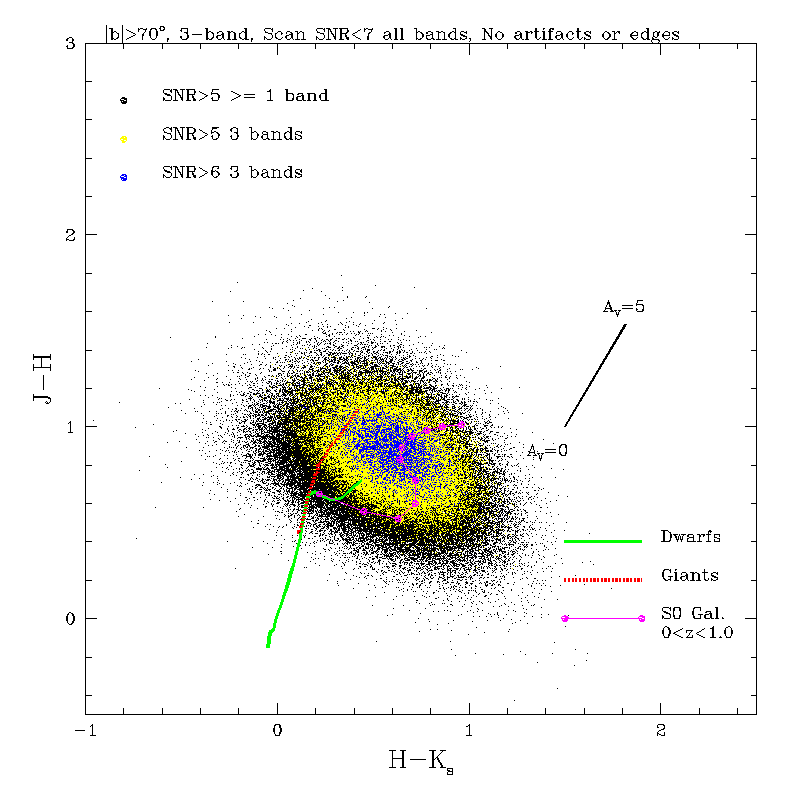I. Introduction
II. High Galactic Latitude SNR 5-7 Sources
Select sources from the final processing point source working database
with that satisfy the following criteria:
- abs(glat)>70 (high galactic latitude
- dist_edge_ew>10 AND dist_edge_ns>10 (Edge boundary)
- cc_flg LIKE '000' (no artifacts identified in scan processing)
- rd_flg[1]!='0' AND rd_flg[2]!='0' AND rd_flg[3]!='0' (3-band detections)
- j_snr>5 OR h_snr>5 OR k_snr>5 (Scan SNR>5 in at least one band)
General Statistics:
| Description | Total | Number with USNOA counterpart (Fraction) |
| Scan SNR>5 in >1 band | 152082 | 100956 (0.664) |
| Scan SNR>5 in 3 bands | 48526 | 35377 (0.729) |
| Scan SNR>6 in >1 band | 95893 | 65256 (0.681) |
| Scan SNR>6 in 3 bands | 5306 | 4165 (0.785) |
Colors
Figure 1 shows the J-H vs. H-Ks color-color diagram for the high latitude low SNR sources. black points represent sources with 5 < Scan SNR < 7 in at least one band, yellow points have 5 < Scan SNR < 7 in 3 bands, and the blue points have 6 < Scan SNR < 7 in 3 bands. The green, red and magenta overlays show the location of dwarf stars, giant stars, and the mean S0 galaxy colors ranging from 0 < z < 1.0. The colors of the high latitude low SNR sources are consistent with those of galaxies with redshifts of a few tenths.
 |
| Figure 1 |
Examine source images on Quicklook Atlas Images:
- Scan SNR>6 in 3 bands - Examined 25 sources (22 w/o optical counterparts)
- 25 real sources - often fuzzy - faint galaxies on DSS
Last Updated: 5 December 2001
R. Cutri - IPAC